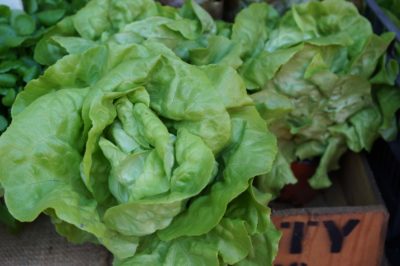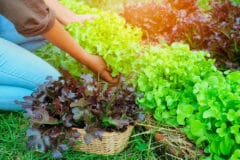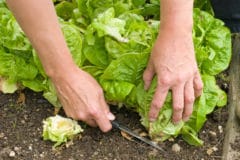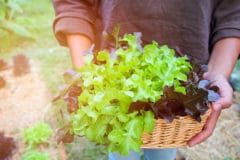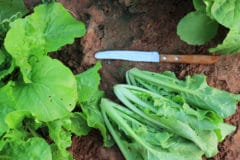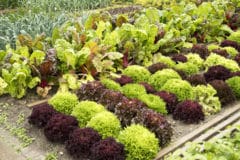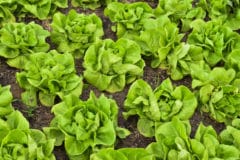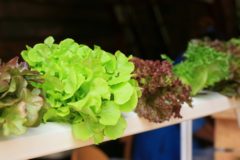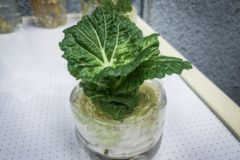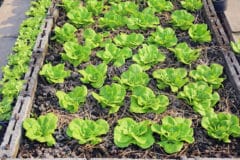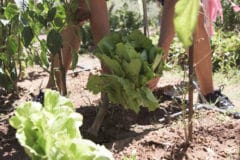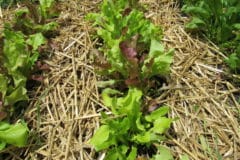Natural Varieties
It’s important to distinguish between red varieties of lettuce, and lettuce that has turned red due to deterioration. Red leaf lettuces naturally produce a pigment within the leaves called anthocyanin.
Anthocyanin is a healthy antioxidant that helps combat free radicals in the body. This same pigment causes leaves to turn red in autumn and produces the purple in vegetables like kohlrabi and purple broccoli. Red lettuces are colorful and nutritious additions to any salad or sandwich.
Oxidation
Antioxidants are not responsible for the type of reddening that occurs in green leafy lettuces during storage or because of damage. In the same way that an apple browns once cut open, leafy vegetables deteriorate due to oxidation. This is the most common reason for lettuces to turn red or brown, and it happens because of exposure to oxygen.
When leaves are damaged through being cut or smashed, cell walls are broken allowing air into the capillaries of the plant. The oxygen acts as a catalyst that triggers an enzyme in the plant to produce off-colored compounds. Specific storage techniques will help reduce oxidation of leafy vegetables.
Ethylene Gas
Another reason that lettuces ‘rust’ or turn red is exposure to ethylene gasses. Lettuces are particularly sensitive to ethylene gas, and this results in redness of the stem or lettuce rib. Ethylene is a common gas abundant in ripening fruits and vegetables. This is why certain fruits like pears and apples are kept in paper bags to ripen so that the ethylene they emit will surround them and ripen them faster.
Best Storage Options
Here are some storage tips for long-lasting lettuce:
- Store lettuce well away from ripening fruits like apples, tomatoes, melons, and pears
- When harvesting lettuce cut as low as possible toward the base of the plant to avoid cutting through any leaves
- Store in vacuum sealed bags or tight plastic that keeps most oxygen out
- Store at 34°F (1°C), temperatures either too cool or too warm can damage lettuce leaves and cause redness
The enzymes that cause redness in lettuce aren’t harmful and can be eaten. However, once lettuce shows signs of reddening, it should be used quickly. It may take on a slightly bitter taste, and further deterioration is right around the corner.
